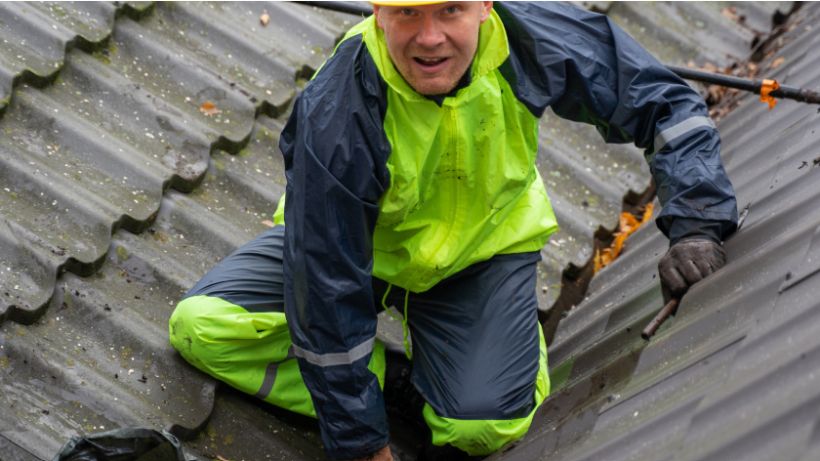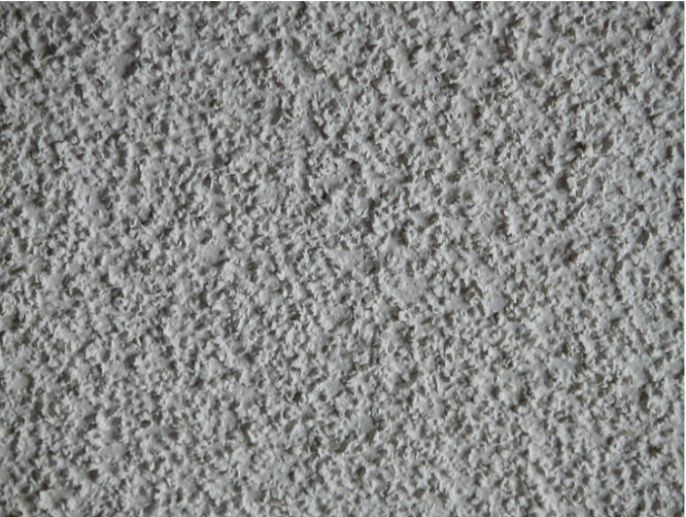I’ll never forget the first time I saw “the fluffy stuff.” I was helping an old friend renovate a 1960s bungalow in the middle of July—hot, sticky, and filled with surprises.
We were tearing down what looked like harmless ceiling tiles when a powdery, fibrous mess started raining down. “Is that insulation?” he asked.
I took one look, froze, and muttered, “I really hope that’s not asbestos.”
Spoiler alert: It was.
That day sent me down the rabbit hole of learning exactly what does asbestos look like, where it hides, and why you absolutely can’t rely on your eyes alone.
As someone who now spends her days unraveling safety myths for a living, I’m here to make this stuff make sense—minus the scare tactics and scientific gobbledygook.
Is It Cotton Candy or a Hidden Danger?

Image source- Seeker
If you’ve ever stumbled across a fluffy, fibrous material in an older building, you may have wondered if you were staring at asbestos.
But here’s the tricky part—asbestos isn’t just one thing. It comes in many textures, forms, and colors, and it can be hiding in plain sight.
Raw asbestos can look like soft cotton, wool, or even rock wool insulation. Depending on the type, it could be:
- White and wispy (chrysotile)
- Brown and fibrous (amosite)
- Blue and needle-like (crocidolite)
Some rarer types like tremolite and actinolite can even appear gray, green, or transparent. Confusing, right?
But here’s the kicker—you can’t see the fibers that matter most. Asbestos is made up of microscopic filaments thinner than a human hair. What your eye sees is just the surface. The real danger is airborne and invisible.
Also Read: When Did They Stop Using Asbestos?
What Does Asbestos Look Like in Everyday Materials?
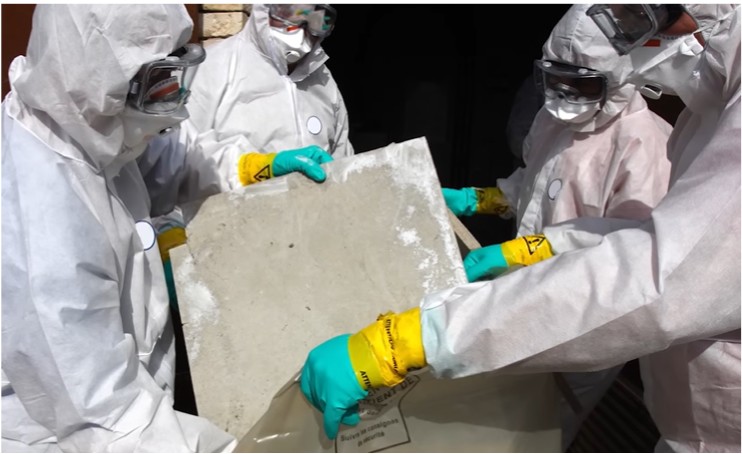
Image source- Seeker
Here’s where things get even trickier. Asbestos was once considered a miracle material. Fireproof, cheap, and nearly indestructible?
Sign us up, said manufacturers for decades. That means it’s been mixed into everything from floor tiles to textured ceilings, cement siding, pipe insulation, and even old gaskets.
So, what does asbestos look like when it’s mixed in?
- Floor tiles or vinyl sheet flooring: Often look just like modern tiles, but many older styles (especially 9×9 inch tiles) may contain asbestos.
- Cement sheets and siding: Typically gray or off-white, these may look fibrous or have a dusty, chalky finish.
- Ceiling tiles and Artex-style textures: Might look speckled, swirled, or just old-fashioned—but some contain asbestos.
- Insulation materials: These could appear fluffy like shredded paper or hard, white-coated wrappings on pipes.
Bottom line? It’s usually disguised and never obvious. You may be looking straight at it and have no clue.
What Is Friable Asbestos—and Why Should You Care?
Great question.
Friable asbestos:
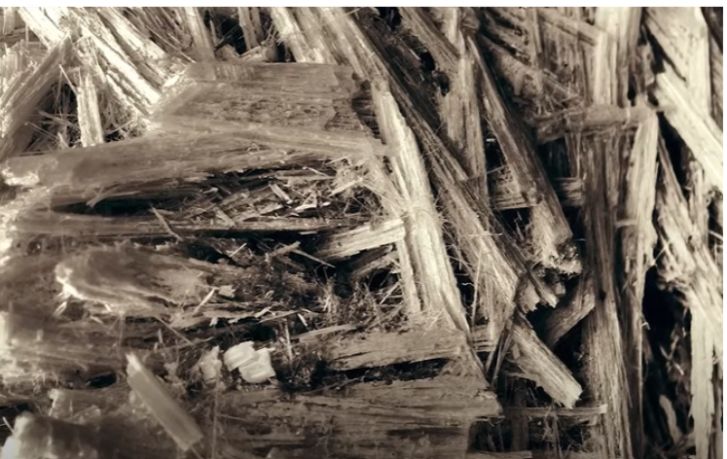
Image source- Seeker
Friable asbestos is the scary kind. That’s asbestos that crumbles easily and can release dangerous fibers into the air with just a touch. Think loose-fill insulation or crumbling pipe lagging.
Non-friable asbestos:

Image source- Seeker
Non-friable asbestos is bonded into harder materials like cement or tiles. It’s safer when intact but becomes a major risk when cut, drilled, sanded, or broken. That’s why a simple DIY project in an older home can suddenly become a serious health risk.
If you ever spot something suspect—don’t poke it, don’t sniff it, and definitely don’t try to remove it yourself.
How Can You Really Tell If It’s Asbestos?
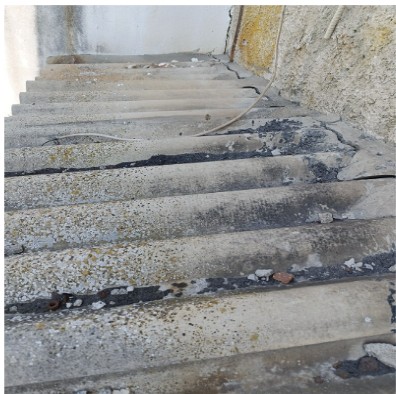
Image source- Wikipedia
Here’s the truth: you can’t tell just by looking. Not even I can. And I’ve seen a lot of asbestos over the years.
The only way to know for sure is through professional testing. Licensed asbestos inspectors collect samples and send them to accredited labs.
It’s quick, precise, and essential for safe removal or management. No guessing games. No panicked Googling.
I’ve worked with clients who thought they’d spotted asbestos in their homes, only to discover it was just blown cellulose insulation or plain old fiberglass.
I’ve also seen folks swear something looked “too modern” to be asbestos—then have it test positive. That’s how sneaky it is.
What Happens If You Disturb Asbestos?
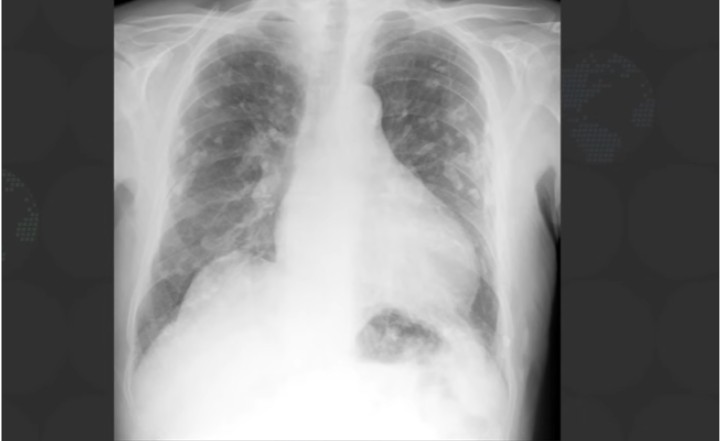
Image source- Seeker
Even gently disturbing asbestos can release tiny, deadly fibers into the air. Once inhaled, they can lodge deep in the lungs and stay there for decades. Asbestos exposure has been linked to:
- Mesothelioma (a rare, aggressive cancer)
- Asbestosis (lung scarring)
- Lung cancer
Symptoms take years to develop, which is why prevention is everything.
If you’ve already disturbed a material and suspect asbestos:
- Stop all work immediately.
- Evacuate the area.
- Shut off central HVAC systems to prevent spread.
- Call a licensed asbestos specialist ASAP.
FAQs About What Does Asbestos Look Like?
1. Can I identify asbestos by color or texture?
Nope. Asbestos comes in various colors—white, blue, brown, green—and can be fluffy or solid. It mimics many other materials, so visual identification is unreliable. Always call a pro if you’re unsure.
2. Is all old insulation asbestos?
Not necessarily. Older homes may have cellulose, fiberglass, or vermiculite insulation. Some vermiculite products (like Zonolite) are known to contain asbestos. The only way to confirm is through lab testing.
3. What should I do if I suspect asbestos in my ceiling tiles or siding?
Leave it alone and avoid disturbing it. Contact a certified asbestos assessor who can safely sample and test the material. Don’t drill, sand, or remove anything until you know for sure.
4. Can I remove asbestos myself to save money?
Please don’t. It’s illegal in many places without a license. Improper removal can make things exponentially worse. Hire certified professionals with the right training and equipment. Your lungs will thank you.
Don’t Play Guess That Fiber—Call in the Experts
Look, I get it. Renovations are exciting. You want to tear down walls, pull up floors, and get the job done. But when it comes to what does asbestos look like, the only smart move is to never assume.
Think of asbestos like mold, but sneakier. If you think you see it—back away slowly and call someone with the training (and the respirator) to handle it.
Take it from someone who’s seen both the horror stories and the safe, professional fixes. When in doubt? Test it out.

